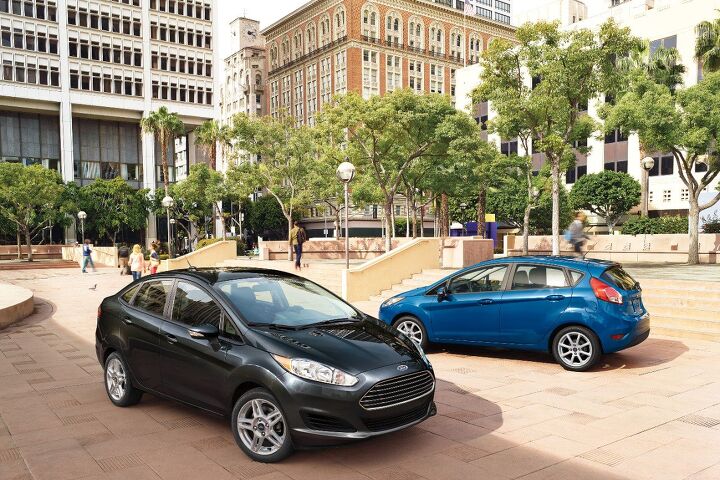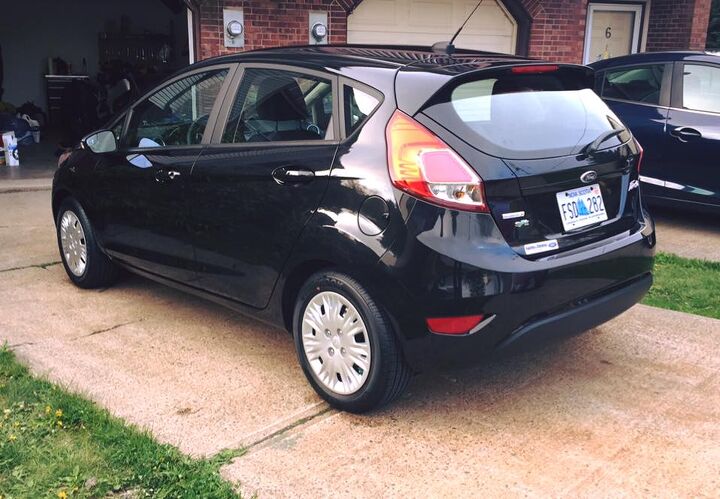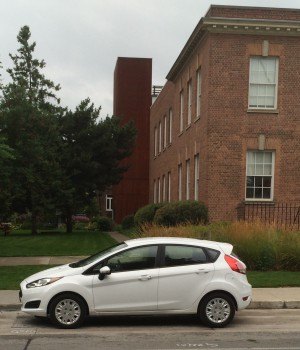#FordFiestaSfe
Mournful Glances: Carryover 2018 Ford Fiesta Loses the $995 Three-cylinder EcoBoost Engine Option
At TTAC, we’re big fans of Ford’s 1.0-liter three-cylinder EcoBoost engine. In the right application — the sixth-generation Ford Fiesta — the EcoBoost triple is a happy revver, a fuel miser, a torque manufacturer, a smooth operator.
In fact, we’re such big fans of the EcoBoost three-cylinder that our editor-at-large bought and paid for a Fiesta 1.0 EB long-termer with his own money. That’s a strong recommendation. Recommendations don’t come any stronger than that.
With the existing, aged, increasingly antiquated Mexico-built Ford Fiesta continuing as a 2018 model year subcompact whilst much of the world benefits from the launch of a new generation of Fiestas, Ford is trimming the Fiesta lineup. The standard 1.6-liter four-cylinder persists; the Fiesta ST forges on.
But the Ford Fiesta’s 1.0-liter EcoBoost three-cylinder is signing off.
2015 Ford Fiesta 1.0 EcoBoost Long-Term Test - The First Year
It’s been a year. On this very day one year ago, I took delivery of an oval-badged, ovoid-shaped, three-cylinder hatchback.
My 1.0-liter Ecoboost-powered Ford Fiesta, with its five manually-operated forward gears and turbocharged torque has provided 12 months and over 10,000 miles of mostly trouble-free driving. Two oil changes and no need for other maintenance have kept operating costs low. And its 17-inch Maxxim Winner wheels, provided by Discount Tire, and Michelin Premier A/S tires have classed up the joint much more than I could from the factory.
I don’t regret my decision to plunk down my own hard-earned cash on Ford’s most diminutive vehicle (in terms of overall size and engine displacement) sold in North America, but it hasn’t been all sunshine and rainbows, either.
2015 Ford Fiesta 1.0 EcoBoost Long-Term Test - The First 3,000 Miles
After scoring a stellar deal on our ’15 Ford Fiesta 1.0 EcoBoost, thanks to the advice of those who know more about the car buying process than I do, my girlfriend and I have put just over 3,000 miles on our diminutive hatchback.
In those 3,000 miles, the Fiesta has patiently allowed Jenn to hone her manual-transmission skills, been to the dealer once (more on that in a bit), carted us and our furry dependents around the province, and not once been close to an autocross course — though not due to my lack of trying.
2015 Ford Fiesta 1.0 EcoBoost Long-Term Test - The Purchase
Earlier this year, I was planning on showcasing on TTAC my 2008 Saturn Astra as a testbed of Millennial ingenuity.
Us Millennials want the latest technology in our rides, but we don’t necessarily have the funds to buy brand-new cars. We’re a debt-laden demographic, thanks to a combination of rising education and living costs, but we want all that fancy connectivity. I figured I could probably get away with adding all the technology I wanted to a car that’s eight years old, thus saving on the outlay demanded by a new vehicle purchase and the corresponding increase in my insurance premium.
Then the Fiesta happened.
Capsule Review: Ford Fiesta 1.0L Ecoboost
No alloy wheels. No automatic transmission. No fancy infotainment system. From the perspective of the Ford Fiesta 1.0L Ecoboost really doesn’t have a lot going for it – at least that’s what Kamil Kaluski thought when he tested a 4-door sedan earlier this summer. The three-cylinder Fiesta is certainly an odd duck. That’s part of its charm.




















Recent Comments